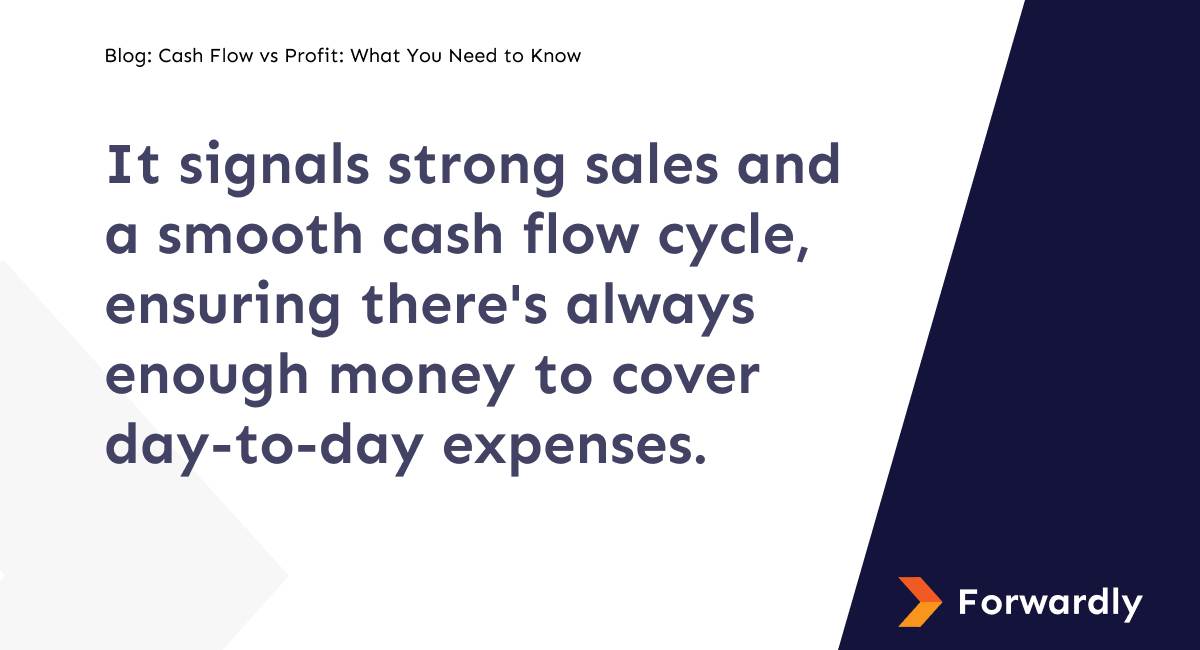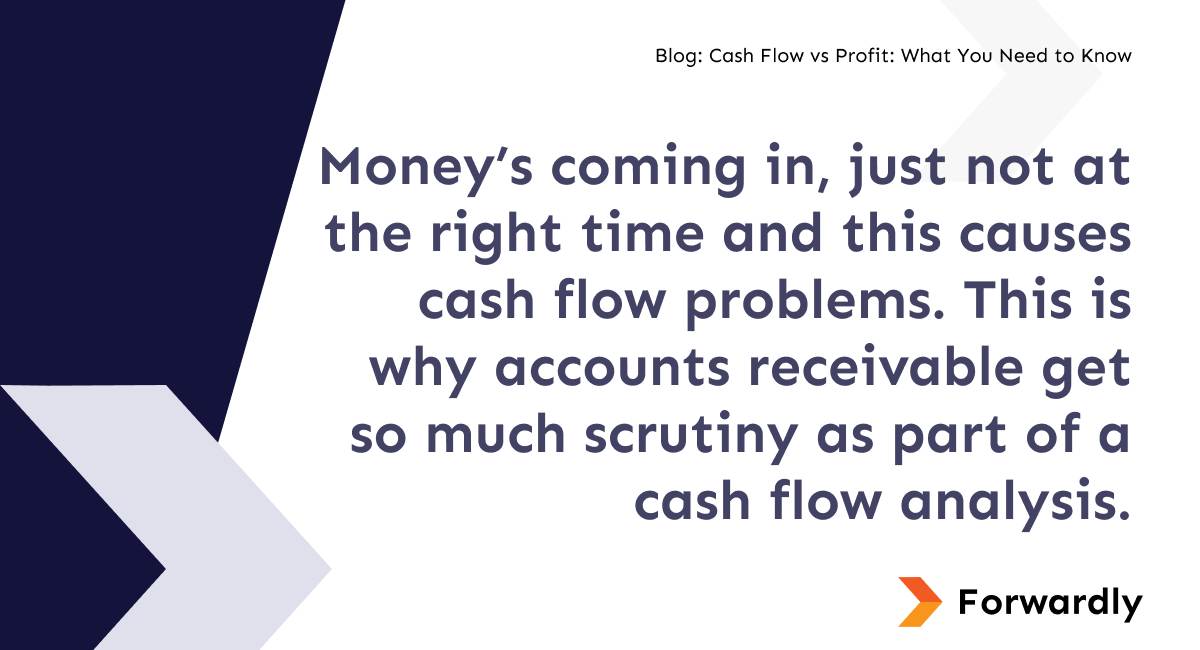You know how butterflies and moths might look alike at first glance, but they’re actually quite different? Well, the same goes for crocodiles and alligators, and even speed and velocity. Understanding the difference between cash flow and profit can be just as tricky. But don’t worry, we’re here to help shed some light on it! Cash flow and profit might seem like they go hand in hand, but they each play their important roles. Let’s break it down together to manage finances better!
The “textbook” definition of cash flow
Cash flow is the pattern and amounts of cash that move in and out of business over a set period of time.
- Cash flowing into a company is called an inflow, while cash flowing out is an outflow.
- It is primarily a measure of liquidity or a company’s ability to meet its short-term obligations, such as fulfilling orders, meeting payroll and other routine operational costs.
- It is measured across operations, investment and financing activities — with the operational or day-to-day incomes and expenses, especially accounts receivable and accounts payable, taking center stage.
Cash flow = operational cash flow + investment cash flow + financing cash flow
The primary metrics for cash flow are recorded in a cash flow statement.
The “textbook” definition of profit
Profit is literally revenue minus expenses. It’s the total amount of money that a company brings in, minus the total expenses. It’s a measure that simply determines if the company is bringing in enough sales to cover the overall cost of running the business and generate a surplus. The variables for profit are recorded in a profit & loss statement, also known as an income statement.
Calculating profit
Profitability is a factor of gross profit and net profit.
Gross profit = revenue – cost of goods sold (COGS)
Net profit = gross profit – operating expenses
As an example, here are the numbers for Joe’s Trucking:
Joe’s Trucking earned $30,000 in revenue one month, but its COGS was $10,000. On top of that, there was another $5,000 in operating expenses.
Gross profit = $30,000 (revenue) – $10,000 (COGS) = $20,000
Net profit = $20,000 (gross profit) – $5,000 (operating expenses) = $15,000
Cash flow vs profit — the different math
One difference between cash flow and profit is that cash flow only records income when it comes in, such as when an invoice is paid. Profit is recorded as it hits the books when an invoice is sent out, instead of when it’s paid.
For instance, if the $15,000 net income for Joe’s Trucking is only accounting for outflows stemming from COGS and operating costs. However, it doesn’t reflect the impact of unpaid invoices. So, if Joe’s Trucking recorded $20,000 in invoices issued, but none of the invoices were paid, they’d actually have a negative cash flow of $5,000.
$15,000 (net profit) – $20,000 (accounts receivable outstanding) = -$5,000
This means that while Joe’s Trucking is profitable, it’s cash flow wasn’t as healthy. Cash flow tells you when money is going out and when it’s coming into your company, while profit doesn’t reflect the timing of inflows and outflows. As a result, while cash flow and profit are related, they’re not directly correlated. If one is positive, the other won’t necessarily be positive and vice versa.
It’s also a reason why businesses can get frustrated come tax time as business income taxes are calculated based on profit rather than cash flow. If it looks like you’ve made money, you’ll have more taxes to pay, even if you don’t have the money to do so.
Cash flow vs profit — the four scenarios
How a business can be cash flow positive and profitable?
Attaining positive cash flow and profitability simultaneously is like hitting the jackpot for any business. It signals strong sales and a smooth cash flow cycle, ensuring there’s always enough money to cover day-to-day expenses. This harmony indicates that both accounts receivable and accounts payable processes are working together seamlessly, leading the way for financial success.

How a business can be profitable and cash flow negative?
A business in a rapid growth phase might be highly profitable but have a shortage of cash due to the investment needed to meet demand, such as an equipment purchase. Or, it could be that their accounts receivable cycle is out of sync with their accounts payable. Money’s coming in, just not at the right time and this causes cash flow problems. This is why accounts receivable get so much scrutiny as part of a cash flow analysis.
How a business can be cash flow positive with no profit?
This scenario is most likely for new or early-stage businesses and startups. For example, if a startup has a cash influx due to investor funding while the product or service is under development. Or, it could be a business that just opened its doors. It has the reserves to get to a starting point but hasn’t begun to record income.
Another reason a business can be cash flow positive without a profit is when the owner has secured financing to solve a lumpy cash flow. If the terms of the loan aren’t favorable, this can also lead to further cash flow struggles.
How a business can be cash flow negative and have no profit?
Actually, you can’t be a business for very long without cash flow or profit. This is the worst-case scenario – no sales and no reserves. There’s likely a fundamental flaw in the business plan, the product, pricing or all of the above. Hint: Nobody aims for this one.
Cash flow vs profit: Which truly drives success?
There’s a reason why Batman is always the hero and Robin is a sidekick. Conspiracy theories aside, once start studying up on cash flow, it’s impossible not to stumble across the expression, “Cash is king.” Because, in the business world, it’s true. Of course, profit helps, but the thing that matters most is having enough money at the end of the day to pay your bills. If you’re not paying attention, cash flow can be a silent killer.
Crisis-proofing cash flow
Ensuring a steady cash flow is crucial, especially for small and medium-sized businesses like yours. Stick to cash flow management strategies tailored to your business needs. Sometimes, it can be tough to find quick lending options, even getting a credit card can be a hassle when you’re just starting out or your credit score isn’t stellar. And let’s not even talk about the long wait times for traditional loans!
Luckily, there are online financial tools designed to help. They offer features like cash flow forecasting linked to your online accounting software and options like invoice factoring to speed up access to funds. Take Forwardly, for example. It’s a lifesaver for streamlining your accounts receivable and payable. With Forwardly, you can get paid in as little as 60 seconds with instant payments or opt for free same-day ACH transfers. Plus, the transaction fee for receiving instant payments is super low at just 1%, with seamless integration with QuickBooks Online and Xero. Forwardly simplifies accounts receivable and payable processes by importing invoices and bills directly.
Getting paid and paying bills has never been easier – it’s literally just one click away! Want to see the Forwardly product tour? Let’s take a look!
 Back to Blog
Back to Blog



